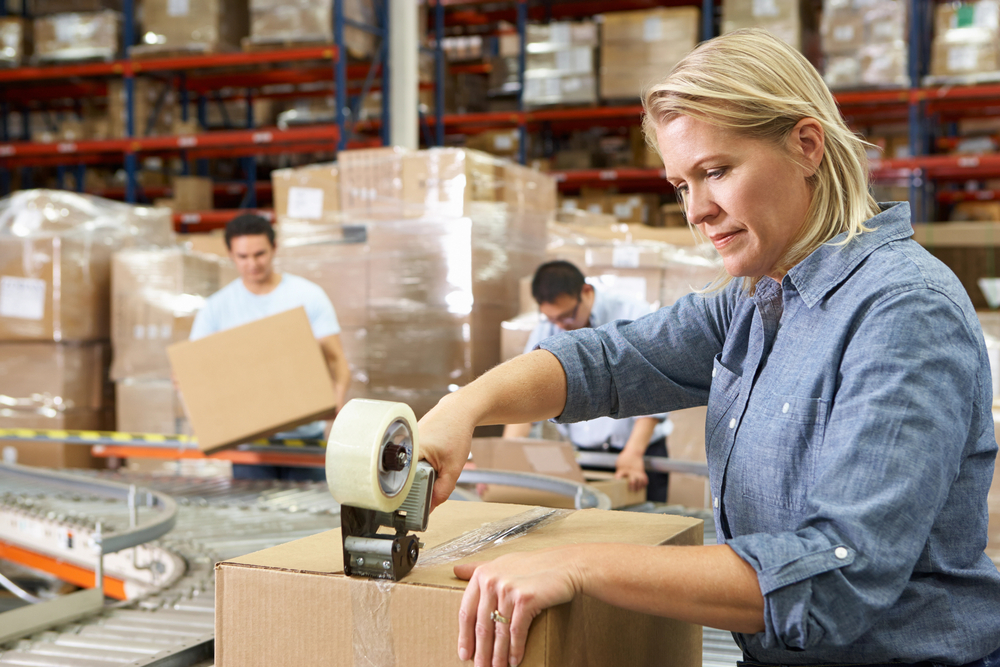To your customers, the sound of wheels crunching on the driveway means their package is here! They sign off with a smile, and there it is: your product, safely cocooned in its shipping package, promising a delightful experience.
Packaging is about more than just getting your product from A to B. It’s about making a statement, building trust, and turning a simple delivery into an unforgettable event. From the first time your shoppers see your package, your brand starts to tell its story, setting the stage for the customer’s excitement and satisfaction. Below, discover nine essential considerations regarding your shipping packaging designs.
1. Branding and First Impressions
First impressions matter, and your packaging is your handshake with your customer. Just like your shipping with Cabrella shows off your business’s professionalism and care, companies see your product’s packaging before they even see the product. This is your chance to shout your brand’s identity from the rooftops without saying a word.
Use vibrant colors, bold logos, and a pop design to make that first visual contact memorable. Consider adding a quirky tagline right on the box or a pattern that customers can only see up close.
Whatever you choose, make it uniquely you. This approach differentiates your product by crafting an identity that customers can recognize instantly, even from a distance.
2. Material Choices
Selecting the right materials for your packaging should be more than a logistical decision — it’s a statement of your brand’s values. Are you a champion of sustainability? Consider biodegradable options or post-consumer recycled materials.
Concerned about product safety? Invest in sturdy, high-quality materials that reassure your customers their purchase is protected, rain or shine. Remember, the material you choose speaks volumes about your brand before the box is even opened.
3. Cost Efficiency
Here’s the deal: You want your packaging to be eye-catching and robust, but your budget isn’t infinite. This is where creativity meets thrift. Explore bulk purchasing or negotiate with suppliers for better rates on high-quality materials.
You should also consider designs that require less material without compromising structural integrity. Simplify where you can and invest where it counts, knowing that efficient packaging reduces both your costs and your carbon footprint.
4. Product Safety and Security
A broken product means a broken heart for your customers, which is why safety and security are paramount in packaging design. Optimize your design to protect against common transit hazards like bumps, drops, and the occasional overenthusiastic toss by delivery personnel. Consider using custom foam inserts, bubble wraps, and sturdy dividers tailored to fit the contours of your products, improving protection during transit.
Don’t forget your reliable safeguard: integrated shipping insurance. Shipping insurance is an essential layer of security, providing financial protection and peace of mind against unexpected mishaps. Offering this kind of assurance makes it clear to customers that their satisfaction and investment are taken seriously, deepening their trust in your brand.
5. Unboxing Experience
The unboxing moment can significantly elevate customer satisfaction and cement brand loyalty. Why not include a few surprises? Think about adding creative inserts like thank-you cards, discount offers for future purchases or even fun trivia about your product or company.
Make it an Instagram-worthy event: Colorful confetti, elegant tissue paper, or branded stickers can turn an ordinary unboxing into a shareable spectacle. Remember, the thrill of unboxing is your brand’s stage to shine.
6. Environmental Impact
With more consumers prioritizing sustainability, your packaging choices can make or break their buying decisions. Opting for eco-friendly materials not only helps the planet but also boosts your brand’s image.
Explore recyclable, reusable, or compostable packaging options. Through your packaging choices, inform your customers that your brand cares about the environment. For instance, simple messages on packaging like “I’m made from recycled materials” can resonate deeply with environmentally conscious shoppers.
7. Legal and Regulatory Compliance
Navigating the maze of packaging laws might not be glamorous, but it’s essential. Compliance with local and international shipping regulations makes sure your packages move smoothly across borders without legal hitches. This includes everything from the materials used to the labeling and handling instructions.
It’s crucial to stay informed about changes in packaging laws to avoid costly penalties and delays. Plus, compliance safeguards your business and reassures customers about the legitimacy and quality of your product.
8. Size and Weight Optimization
Efficiency in packaging goes beyond aesthetics and protection — it’s also about smart sizing and weight management. By minimizing the size and weight of your packaging, you’re cutting down on both material costs and shipping fees.
This practice is beneficial for your bottom line and reduces the carbon footprint associated with transportation. Utilize packaging that fits your product snugly without unnecessary layers or fillers, and consider lightweight materials that still provide adequate protection.
9. Customer Feedback
Last but not least, don’t overlook the gold mine that is customer feedback. Engaging with your customers to get their thoughts on your packaging can uncover insights you might never have considered.
Use surveys, social media polls, or direct communication to gather opinions and suggestions. After all, no one is better able to tell you about your packaging’s performance than the people who interact with it every day.
What Your Packaging Says About Your Brand
From creating a memorable unboxing experience to staying compliant with the law, every aspect of your packaging strategy plays a pivotal role in shaping customer perceptions and experiences.
As we’ve explored these nine crucial considerations for designing your shipping packaging, remember that each element is an investment in your brand’s reputation and customer loyalty.



































